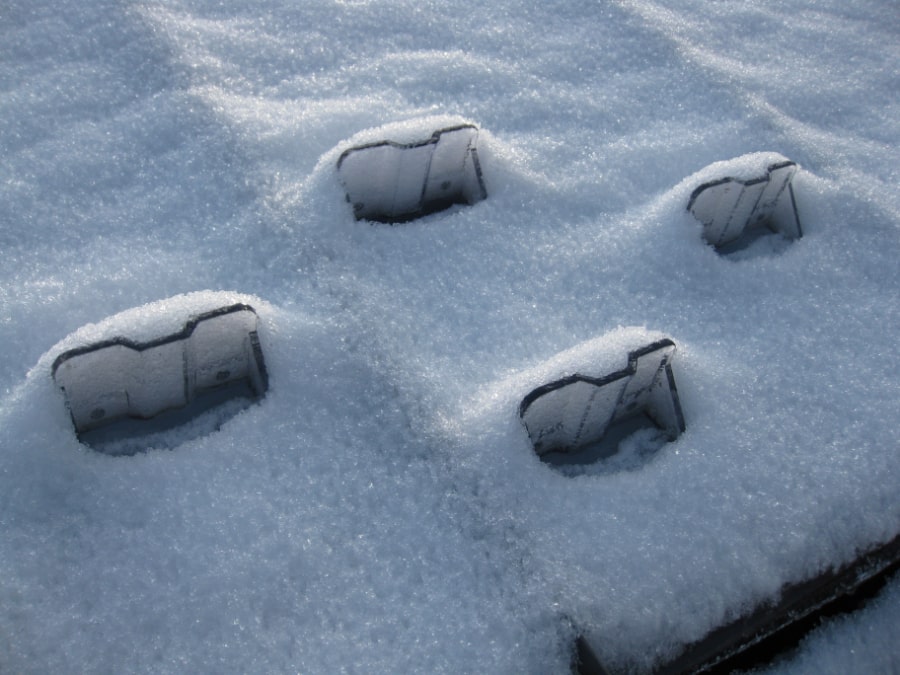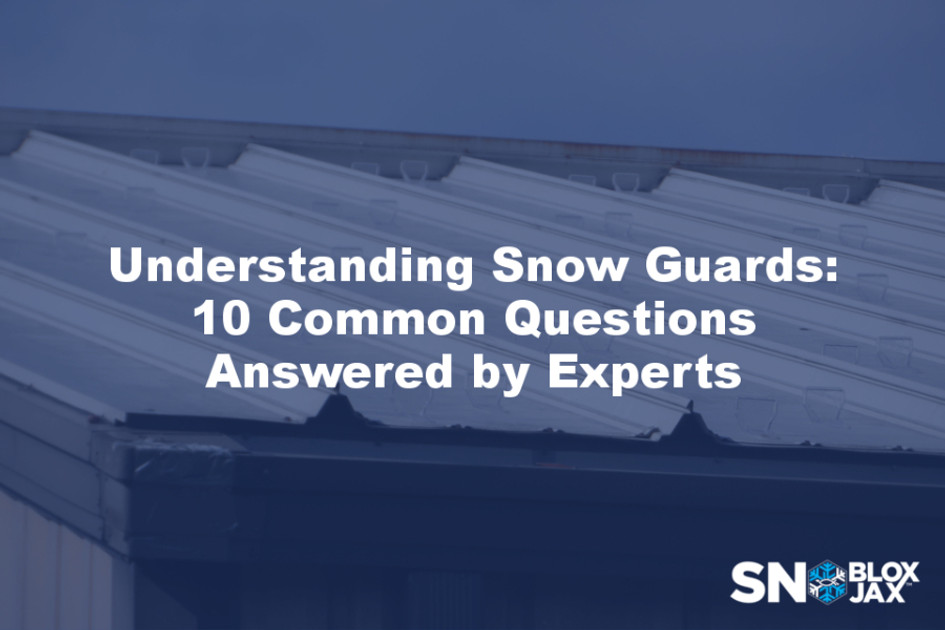Understanding Snow Guards: 10 Common Questions Answered by Experts
Posted by Derek Gamble - SnoBlox-Snojax Specialist on Nov 22nd 2023
“He who asks is a fool for five minutes, but he who does not ask remains a fool forever.” - Mark Twain
When it comes to dealing with snow on roofs people often find themselves with plenty questions. Finding clear answers can be challenging. Factors like roof type, location, snow load, eave length and roof slope all play a role in determining the correct design for a snow retention system. That's why it is crucial to have access to e xperienced professionals and top notch customer support whether you're working on a residential or commercial project. In this article we aim to provide answers to some of the most common questions that we get about snow guards.

1. How snow guards will I need for my project?
One frequently asked question regarding snow guards revolves around quantity. The number of snow guards required for a project depends on factors such as roof type, slope, rafter length, building orientation and snow load. To make things easier, for homeowners, contractors and roofers alike we offer Snow Guard Spacing Charts that are user-friendly, intuitive, and best of all….FREE.
The challenging part of system installation is already done if you know your roofs pitch, the distance between the ribs of roof panels, the ground snow load, and the type of system you want. To access recommendations for spacing in your project from our handy charts, simply choose the snow retention method you prefer. Next find your roofs pitch on the chart near the top of the page. Finally, refer to the pitch specific description and diagram to understand the suggested horizontal and vertical spacing. These charts are only for use in areas with snow loads up to 45 psf. For projects with higher snow loads, please fill out the SnoBar/ColorBar Price Quote Form.
2. Which is better for my project; pad style guards or a bar system?
While both pad style guards and snow rail systems are excellent options for any project it is advisable to use a snow rail system if you are in an area with a ground snow load exceeding 45 psf. Regardless of the type chosen, a well designed snow retention system generally includes multiples rows, along the slope of the roof. Although a snow rail system may require fewer rows, it can sometimes be more expensive compared to pad style snow guards.

3. Can I install my snow guards by myself?
The ease and speed of installation, for snow guards, can vary greatly depending on your level of expertise. Many of our customers are DIY homeowners. We provide installation instructions with every order, which can also be found on our website. One important consideration when installing snow guards is ensuring safety on a sloped metal roof. Before you begin the installation process and go up onto your roof, it's critical to make sure that you are using fall protection like the RidgePro. If you prefer to hire a professional, any general or roofing contractor should be able to handle the installation of these products.
4. Do snow guards require maintenance?
Snow guards that are installed correctly and have a designed layout normally require little to no maintenance. However, we recommend conducting an inspection in the spring to check if any snow guards have come loose from the roof. Additionally, it's advisable to check any snow guards or rail systems that use set screws for proper torque during this inspection.
5. Is double sided tape a recommended permanent mounting solution?
Double sided tape is recommended only for use with our SnowBreaker product. The unique shape of the SnowBreaker causes snow and ice to split apart, rather than accumulating in one place. Double sided tape is not recommended for attaching snow guards that are designed to hold snow and ice on the roof surface. In situations where the weather conditions are unfavorable for the adhesives curing time, 3M tape should be used with the SnowBreaker as a temporary solution.

6. Can I get SnoBlox-Snojax snow guards in colors to match my roof?
If you prefer a glue down snow guard option, we offer our SnoBlox Deuce in a few popular roofing shades. Alternatively you can choose any of our metal snow guards or rail systems and have them custom powder coated to match your roof. We provide this service, but you can also purchase them in mill finish and have them coated locally. We have access to powders from many different powder providers such as TIGER Drylac, IFS Coatings, and Sherwin-Williams among others. Moreover we have the capability to acquire or create custom powders for a more bespoke match.
7. Can I install SnoBlox-Snojax snow guards on an existing roof?
Absolutely! Our wide range of snow guard options is specifically designed to be installed on existing roofs.
8. Are polycarbonate snow guards as durable as metal ones?
Based on our testing, snow guards made of metal and polycarbonate using high quality materials often exhibit similar levels of strength. The effectiveness of a snow retention system is not solely dependent, on the design of the guard itself but also heavily relies on the layout. For more information, please visit our resources page and navigate to the testing section. Many of our clients prioritize aesthetics over performance when making their decisions. Only polycarbonate snow guards, however, are suitable for installation on standing seam roofs with adhesive.
9. Can all pad-style snow guards be installed with glue?
It is only advised to use adhesive installation for polycarbonate snow guards. The glue maximizes its staying power by etching itself into the plastic.
10. Do plastic snow guards amber over time?
Not all plastic snow guards are created equal. We exclusively use UV stabilized, 100% virgin polycarbonate manufactured in the United States. Our polycarbonate snow guards rarely turn yellow, but may gradually lose some clarity over time.
If you ever require assistance with your project, feel free to give us a call! We are always happy to help!

